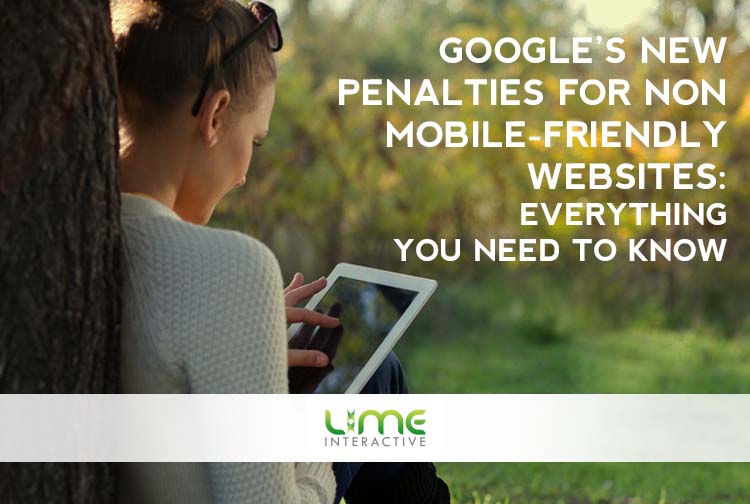Google’s new penalties for non mobile-friendly websites: everything you need to know
On the 21st of April 2015, Google will use new algorithms to rank Internet pages including new parameters that take into account the increasing of the use of mobile devices. Some companies are concerned about a possible demotion of their website on the search engine, and rightly so. This new development could have detrimental consequences for websites that are poorly optimised for mobile. In this article, I’ll give you a brief background on the development followed by 5 things you must know about Google’s April 21st Deadline.
This update from Google is not a real surprise:
From April 21st 2015, these companies which do not have an optimised mobile website will see their rank depreciated on Google. In 2013, Google’s Yoshikiyo Kato and Pierre Far had already announced a change on the search engine:
‘To improve the search experience for smartphone users and address their pain points, we plan to roll out several ranking changes in the near future that address sites that are misconfigured for smartphone users’.
Six months ago Google went further in increasing the visibility of websites that are easily accessible on a mobile device. By adding the label ‘mobile-friendly’ to search results, these websites had already gotten an added value compared to non-optimised websites.
So, what exactly will change with Google’s 21st of April update?
When you are doing research on Google from a tablet or a smartphone, the update version will use new algorithms to rank pages and will put websites that are easily accessible from a mobile device on the highest positions. Simply put, if you want your website to be well ranked, it must be ‘mobile-friendly’ – otherwise, your entire online business could be at stake.
What problems need addressing?
From April 21st if your website has the following problems that indicate you do not have a responsive website, it will not appear on the first results anymore:
- Redirection to a non-accessible page: the type of ‘404 not found’ page that you cannot open with a mobile advice
- Text that is too small to read
- Unplayable videos
- Too many pictures or pictures that are too large in file size that slow down the loading of the page
- Pages that are not optimised for speedy loading on mobile devices.
Needless to say that if your website is demoted, the number of Internet users will be directly affected, and by consequence so does your reputation. Thankfully, there are tools available which will help you identify these problems and I’ve listed them further on in this article.
Why have mobile responsive websites become a new ‘must have’?
Google realised the online market has changed in the last few years; it is now ready to take this evolution into account. Knowing that 80% of Internet users admit they use their smartphone or tablet to search on the Internet, Google has deemed it important for the public to have a privileged place and receive a lot of attention. Indeed today for many of our clients here at Lime Interactive as much as 45% of all online traffic comes from a mobile device and the number is always increasing.
This trend can be capitalised on if you are smart enough to facilitate it by employing the relevant technology. If people try to see a non-optimised website with their mobile device, they will lose patience and become discouraged. On the other hand, a mobile-friendly website that gives them a better experience by reducing the time to load on their device will attract them.
So what to do next?
My first advice would be to check the mobile-device optimisation of your website with the help of these following websites:
- Page Speed Insights: https://developers.google.com/speed/pagespeed/insights/
- Mobile device compatibility Test: https://www.google.com/webmasters/tools/mobile-friendly/
- Webmaster tools: https://www.google.com/webmasters/tools/
They will help you to know how is your website according to Google’s new rules. If the result given is not promising, you have to get a responsive website as a matter of urgency. To meet Google’s new requirement will be an added value for your company: in moving up in the ranking, your visibility online will be your strength. So instead of seeing this as a problem, why not look at it as an incentive to get ahead of the crowd. If you have not done it yet, the time has truly come for you to optimise your website for mobile devices!

